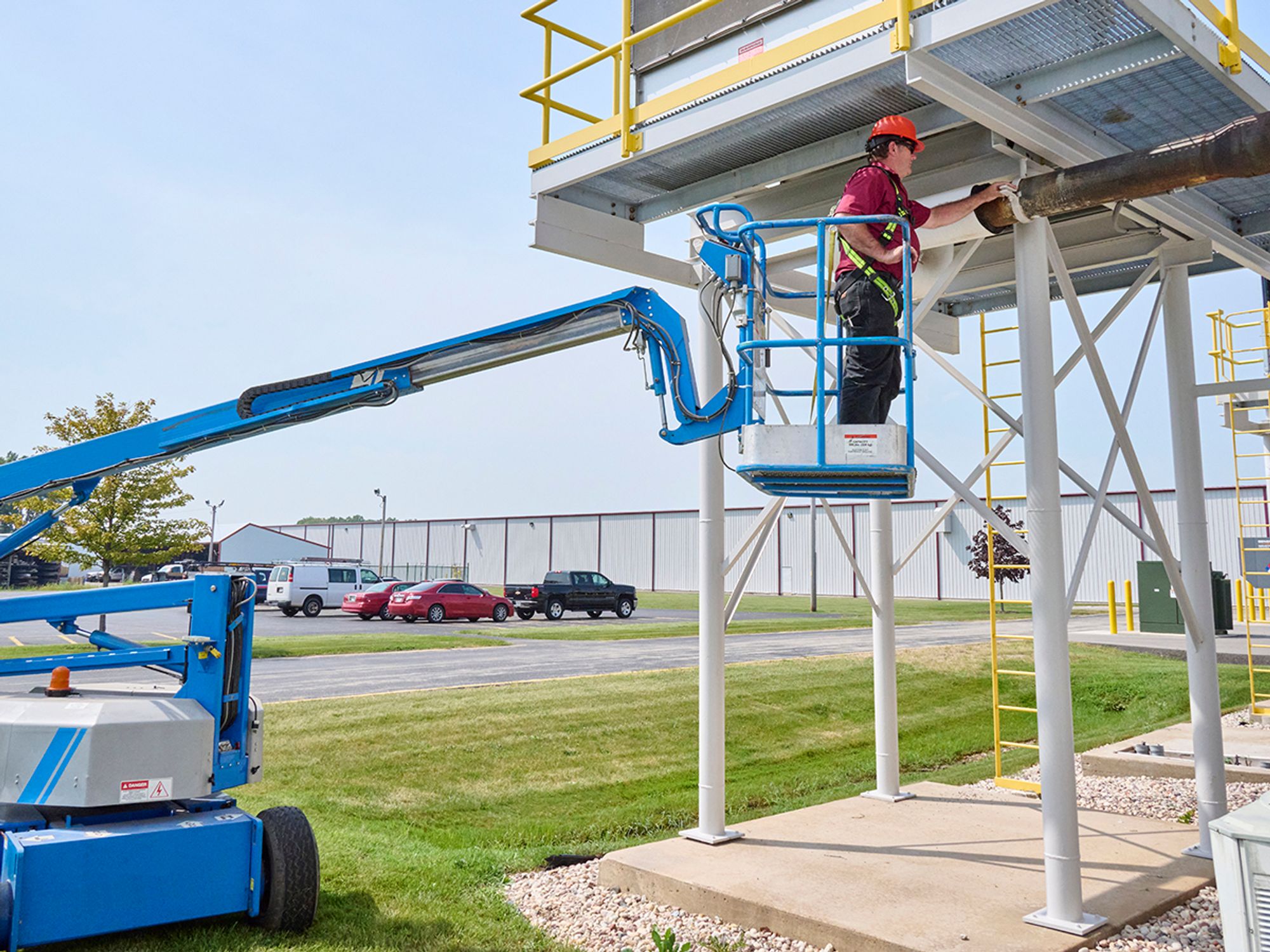Aerial lifts in general industry

- Aerial lifts include a number of vehicle-mounted devices, either manual or powered, used to elevate people.
- Workers should be trained in hazards, operating procedures, inspections, and manufacturer requirements of aerial lifts.
An aerial lift is any vehicle-mounted device used to elevate personnel, including:
- Extendable boom platforms,
- Aerial ladders,
- Articulating (jointed) boom platforms,
- Vertical towers, and
- Any combination of the above.
Aerial lifts have replaced ladders and scaffolding on many jobsites due to their mobility and flexibility. They may be made of metal, fiberglass-reinforced plastic, or other materials. They may be powered or manually operated and are considered to be aerial lifts whether or not they can rotate around a primarily vertical axis.
Scope/who must comply
For general industry (i.e., non-construction) work, the Occupational Safety & Health Association (OSHA) only has a specific requirement for vehicle-mounted elevating and rotating work platforms, such as bucket trucks and smaller mobile, extensible boom lifts. This requirement is contained in 29 CFR 1910.67.
This regulation does not cover order pickers, scissor lifts, or personnel platforms attached to a forklift.
Hazards
The following hazards, among others, can lead to personal injury or death:
- Falls from an elevated level,
- Objects falling from lifts,
- Tip-overs,
- Ejections from the lift platform,
- Structural failures (collapses),
- Electric shocks (electrocutions),
- Entanglement hazards,
- Contact with objects, and
- Contact with ceilings and other overhead objects.
Training
Only trained and authorized persons are allowed to operate an aerial lift. Training should include:
- Explanations of electrical, fall, and falling object hazards;
- Procedures for dealing with hazards;
- How to recognize and avoid unsafe conditions in the work setting;
- Instructions for correct operation of the lift (including maximum intended load and load capacity);
- Demonstrations of the skills and knowledge needed to operate an aerial lift before operating it on the job;
- When and how to perform inspections; and
- Manufacturers’ requirements.
Workers should be retrained if any of the following conditions occur:
- An accident occurs during aerial lift use,
- Workplace hazards involving an aerial lift are discovered, or
- A different type of aerial lift is used.
Employers are also required to retrain workers who are observed operating an aerial lift improperly.
